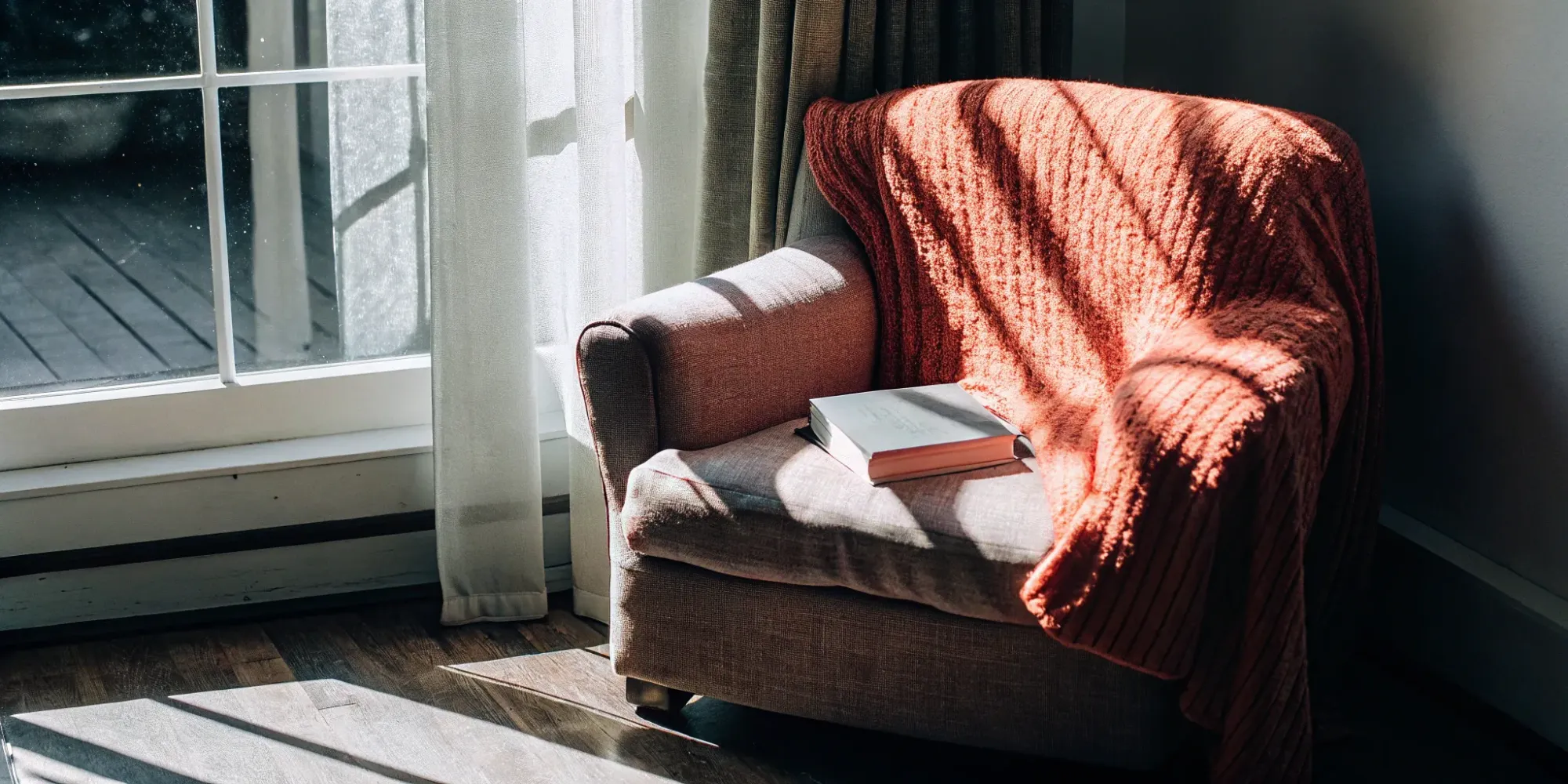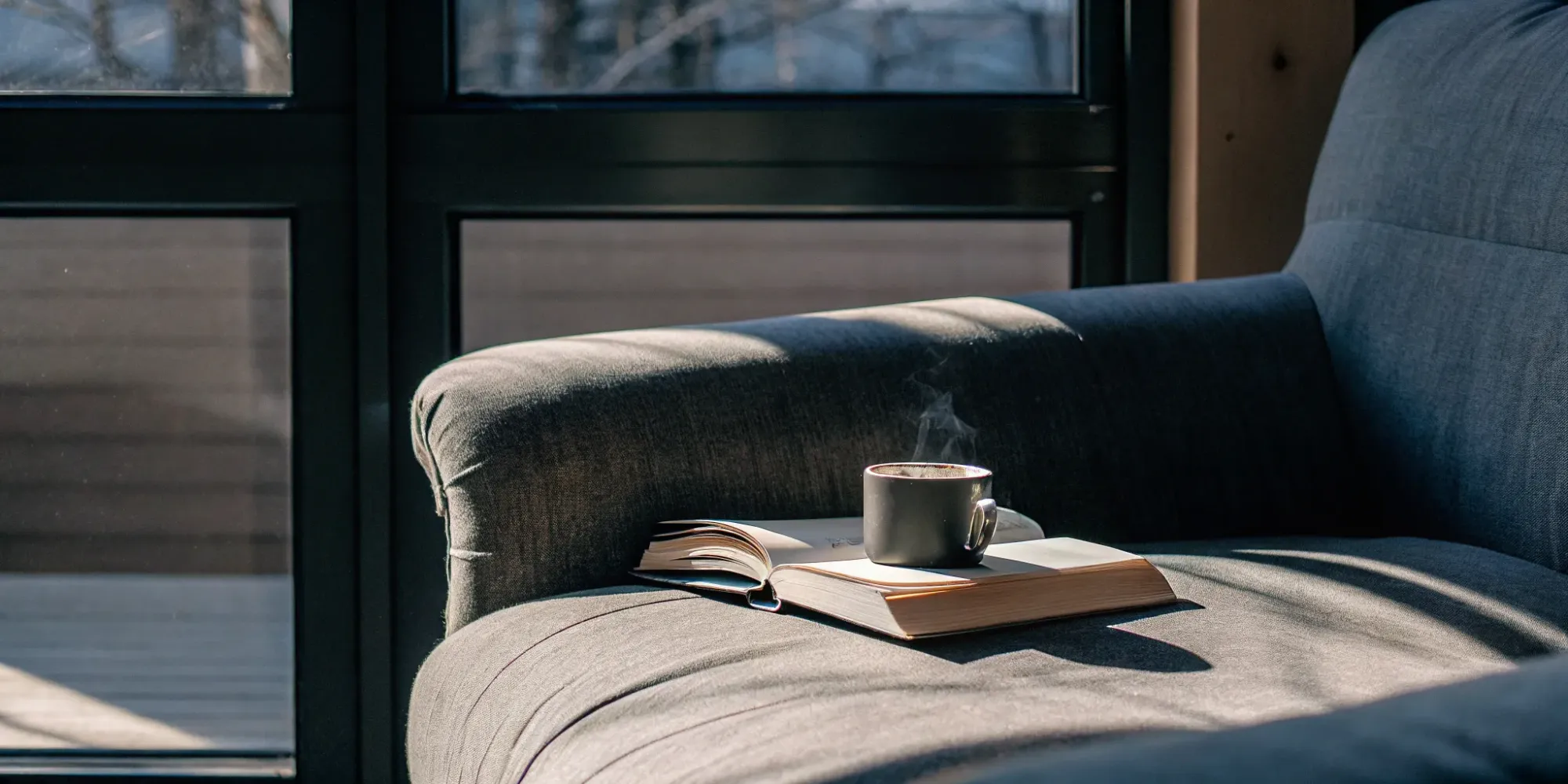Does Renters Insurance Cover Theft? A Simple Guide
15 Jul 2025 • 16 min read

Take a quick mental inventory of your stuff: your laptop, your phone, your TV, your furniture, your entire wardrobe. It adds up to thousands of dollars faster than you’d think. Now, imagine having to replace all of it out of pocket after a theft. That’s a financial hit most of us can’t afford. This is precisely where renters insurance becomes your financial safety net, designed to protect you from that worst-case scenario. So, does renters insurance cover theft? Absolutely. It’s a core feature of any standard policy. This guide will walk you through how that coverage works, the crucial difference between policy types, and how to make sure you have enough protection for everything you own.
Key Takeaways
- Renters Insurance Covers Theft Inside and Outside Your Home: Your policy’s theft protection isn’t limited to your apartment. It also applies to personal items stolen from your car, a storage unit, or while you're traveling, giving you crucial financial protection on the go.
- Document Your Belongings Before You Need To: Create a home inventory with photos or a video to have a record of what you own. For expensive items like jewelry or high-end electronics, consider adding extra coverage to ensure they are protected for their full replacement value.
- Know the First Three Steps to Take After a Theft: If you're a victim of theft, act quickly. Immediately notify your landlord to secure your home, file a police report to create an official record, and make a detailed list of everything that was stolen to prepare for your insurance claim.
What is Renters Insurance and What's Covered?
Think of renters insurance as a financial safety net for all your personal belongings. At its core, it’s a personal property policy designed to protect your stuff—from your comfy sofa and laptop to your entire wardrobe. This coverage kicks in when your things are damaged or lost due to a range of unfortunate events, known in the insurance world as “covered perils.” These often include things like fire, certain types of water damage, and, most importantly for our guide, theft.
One of the best parts about renters insurance is that its protection isn't confined to the four walls of your apartment. If someone steals your laptop from a coffee shop or your luggage from a hotel room, your policy can still cover the loss. As Forbes Advisor points out, renters insurance typically covers theft of your belongings whether it happens inside or outside your home. This "off-premises" coverage is a huge benefit that gives you peace of mind when you're on the go.
Of course, every policy has its limits. Your coverage will pay out up to a certain amount, and you'll usually have to pay a deductible first (we'll get more into that later). It's also good to know that super valuable items, like expensive jewelry or high-end electronics, might have specific limits and could need a little extra coverage to be fully protected. Understanding these details is key to making sure you have the right protection in place before you ever need to file a claim.
Does Renters Insurance Cover Theft?
Let’s get straight to it: Yes, renters insurance absolutely covers theft. It’s one of the main reasons people get a policy in the first place. If someone breaks into your apartment and steals your laptop, or snags your bike from the rack outside, your renters policy is designed to help you recover financially. This protection is a core part of what’s known as personal property coverage, which safeguards your belongings against a list of specific events, or "perils"—and theft is almost always on that list.
Think of it as a financial safety net for your personal belongings. Whether you live in a high-rise building or a garden apartment, having this coverage provides peace of mind knowing that you won't have to bear the full cost of replacing everything out of pocket after a break-in. But like any insurance, the details matter. The coverage isn't a blank check, and it's important to understand exactly what kind of theft is covered and where that protection applies. Knowing the specifics of your policy, from your deductible to your coverage limits, will make all the difference if you ever need to file a claim.
What Kind of Theft is Covered?
Your renters policy is there to protect your stuff, and that includes covering theft of your belongings from inside your home. Think about your furniture, electronics, clothes, and kitchenware—if it's stolen from your apartment, you can file a claim. This coverage also extends to items taken from other places on your property, like a locked storage unit in the building's basement or a package swiped from your porch. When you make a claim, the amount you receive will be for the value of the stolen items, minus your deductible. It’s a huge relief knowing your policy has your back if the unexpected happens.
Does It Cover Theft Outside My Home?
One of the best things about renters insurance is that its protection travels with you. This is often called off-premises coverage, and it means your belongings are covered against theft even when they aren't in your apartment. If your laptop is stolen from a coffee shop or your luggage disappears on vacation, your policy can help. There are a couple of things to keep in mind, though. Coverage for items stored away from your home might be limited—often to about 10% of your total personal property limit. Also, if someone breaks into your car and steals your things, renters insurance covers the stolen items, but any damage to the car itself falls under your auto insurance policy.
What Does Theft Coverage Actually Protect?
When we talk about theft protection in renters insurance, we're really talking about your personal property coverage. This is the part of your policy designed to help you replace your stuff if it gets stolen. It’s not just about a break-in at your apartment; this coverage often follows you and your belongings wherever you go. Think of it as a safety net for everything you own, from your couch and your clothes to your laptop and your bike. This protection is incredibly broad, but it works a little differently depending on what was taken. For most of your day-to-day things, the process is straightforward. But for those special, high-value items, there are a few extra details you’ll want to know ahead of time. Understanding this distinction is key to making sure you have the right amount of coverage and aren't caught off guard if you ever need to file a claim. Let's break down what that protection looks like for your different types of belongings.
Your Everyday Personal Belongings
One of the best features of renters insurance is that it protects your belongings whether they’re inside your apartment or not. If someone steals your laptop from your car or your luggage from a hotel room while you’re on vacation, your policy’s theft coverage can help. This off-premises coverage applies to most of your everyday items—furniture, electronics, clothes, kitchenware, and more. The policy pays out up to your coverage limit, minus your deductible, giving you the funds to replace what was taken and get back on your feet without draining your savings.
What About High-Value Items?
Now, what about pricier things like engagement rings, expensive cameras, or a special piece of art? While your standard policy does cover these items, it often has special limits for them. For example, a policy might only cover up to $1,500 for all stolen jewelry, even if your ring was worth much more. It’s a common detail that can catch people by surprise. If you own items that are worth more than these standard limits, you should look into getting extra coverage, often called "scheduling" an item. This ensures your most valuable possessions are protected for their full value.
Know Your Policy's Limits and Exclusions
Understanding your renters insurance policy is the best way to feel confident in your coverage. It’s not the most exciting reading, but knowing the details before you need to file a claim can save you a lot of stress. Every policy has limits, which is the maximum amount it will pay out for a loss, and exclusions, which are specific situations or items that aren't covered. Let’s break down the three most important things you need to know about your policy’s fine print.
How Your Deductible Works
Think of your deductible as the amount you agree to pay out of pocket before your insurance coverage starts. For example, if a thief steals your $1,000 laptop and your deductible is $250, you would cover the first $250, and your insurance provider would pay the remaining $750. Choosing a higher deductible can lower your monthly premium, but make sure you pick an amount you could comfortably pay in an emergency. It’s a personal choice that balances your monthly budget with your potential financial risk in a worst-case scenario.
Actual Cash Value vs. Replacement Cost: What's the Difference?
This is a big one. Your policy will reimburse you for stolen items based on either Actual Cash Value (ACV) or Replacement Cost Value (RCV). ACV pays you for what your item was worth at the time it was stolen, factoring in depreciation. So, that five-year-old TV won’t get you the funds for a new one. Replacement Cost, on the other hand, provides enough money to buy a new, similar item at today's prices. While RCV policies might have a slightly higher premium, they offer much better protection and peace of mind. At Goodcover, we believe in helping you get back on your feet, which is why we provide Replacement Cost coverage.
What Isn't Covered by Theft Protection
Renters insurance is fantastic, but it doesn’t cover everything. Your policy protects your personal belongings, not the physical apartment building—that’s your landlord's responsibility. It also typically excludes damage from floods or earthquakes, which require separate policies. If your car is stolen, that falls under your auto insurance, though renters insurance would cover personal items stolen from your car. Finally, be aware of special limits on high-value items. Your policy might have a total coverage limit of $20,000, but a sub-limit of only $1,500 for things like jewelry or fine art. If you own expensive items, you may need to purchase extra coverage, often called a scheduled personal property endorsement.
What to Do Immediately After a Theft
Discovering you’ve been robbed is a deeply unsettling experience. It’s normal to feel overwhelmed, but taking a few clear, immediate steps can make a huge difference in your recovery process. Focus on one thing at a time to get through it.
Your First Moves
Once you’re sure you are safe, your first call should be to your landlord or property manager. Letting them know what happened is a crucial first step. They need to be aware of any security breaches in the building and can help with immediate needs, like repairing a broken door lock or window to re-secure your apartment. Your lease might even require you to notify them promptly. They may also have access to security camera footage that could help the police with their investigation. Informing them creates an official record of the incident with property management, which is another piece of documentation that can support your insurance claim down the line.
File a Police Report
Next, you absolutely need to file a police report. This isn’t just a suggestion; it’s a requirement for any theft-related insurance claim. The report is the official document that proves a crime occurred. When you call the non-emergency police line, be ready to provide your address and any initial details you have about the break-in and what’s missing. An officer will likely visit your home to take a formal statement and examine the scene. Don’t clean up or move anything until they’ve had a chance to look around. Most importantly, make sure you get the police report number before the officer leaves—you will need it to initiate your claim with your insurance provider.
Document Everything That Was Stolen
While the event is still fresh in your mind, start making a detailed list of every single item that was taken. This is where having a home inventory is a lifesaver, but if you don’t have one, don’t panic. Just do your best to reconstruct it. For each item, write down a description, its brand, model, and serial number if you have it. Note its estimated value and, if possible, when and where you bought it. Dig for any proof of ownership you can find—receipts, credit card statements, photos, or even the original packaging. The more detail and documentation you can provide, the stronger your claim will be, helping your insurance adjuster process it more quickly and accurately.
How to File a Renters Insurance Claim for Theft
Dealing with a theft is stressful enough, and the last thing you need is a confusing claims process. Fortunately, filing a renters insurance claim is usually straightforward. Think of it as a simple, three-part process: get your proof together, report the incident, and work with your insurance adjuster. Breaking it down this way makes it feel much more manageable. Here’s a clear guide to each step so you know exactly what to do and what to expect.
Gather Your Documents
Before you call your insurance provider, get your key documents ready to make the process go faster. You’ll need the police report from when you reported the crime and a detailed list of everything that was stolen. This is where that home inventory you created comes in handy! For each item, include its estimated value. Having this information organized upfront shows your insurer you’re prepared and helps them substantiate your claim without a lot of back-and-forth.
What to Expect from the Claims Process
With your documents ready, call your insurance company to report the theft. They will open a claim and assign an adjuster to your case—this person will be your main point of contact. They will guide you through the next steps and ask for the documents you’ve gathered, especially the police report, which serves as the official record that a theft occurred. Be prepared to answer questions about the incident and the items taken. Your adjuster’s job is to verify the details of your claim and determine your payout based on your policy.
How Long Will It Take?
This is the question everyone asks, and the honest answer is: it depends. The timeline for a renters insurance claim isn't set in stone. A simple claim with all the right documentation might be resolved in a matter of weeks. However, more complex situations can take longer. The speed also depends on your insurance company’s internal procedures. The best thing you can do to keep things moving is to be responsive and provide any requested information to your claims adjuster quickly. Patience and prompt communication are key during the claims process.
How to Get the Most Out of Your Theft Protection
Having theft protection is a great first step, but a little prep work ensures you can fully use it if you ever face a break-in. Think of it as setting yourself up for success. When you’re dealing with the stress of a theft, the last thing you want is to scramble for proof of ownership or discover your most prized possessions weren’t fully covered. Taking a few proactive steps now can make a world of difference later, helping the claims process go smoothly and ensuring you get the reimbursement you deserve.
It’s all about making your policy work for you. This means understanding what you own, knowing its value, and taking simple precautions to protect it. You don't need to spend a ton of time or money; you just need a solid plan. From creating a quick inventory of your stuff to adding a bit more protection for your favorite things, these actions put you in control. Let’s walk through a few straightforward strategies to make sure your theft coverage is ready for anything.
Create a Home Inventory (Before You Need It)
A home inventory is simply a list of your belongings and what they’re worth. Creating one before you ever need to file a claim is one of the smartest things you can do. It not only makes the claims process infinitely easier but also helps you figure out if you have enough personal property coverage in the first place. You can create a home inventory by walking through your apartment and taking a video, snapping photos of valuable items and their serial numbers, and keeping a running list in a spreadsheet. Save digital copies of receipts for big-ticket items like your laptop or TV. Store your inventory in the cloud so you can access it from anywhere.
Add Extra Coverage for Your Valuables
Your standard renters policy is great for covering most of your things, but it usually has coverage limits for specific categories of high-value items. Things like fine jewelry, expensive cameras, or art collections might be worth more than the sub-limit allows. If you have items that exceed these limits, you should look into adding extra coverage. This is often called "scheduling an item" or adding an endorsement to your policy. At Goodcover, we call this SUPERGOOD coverage. It provides more protection for your most treasured belongings, so you can be sure their full value is covered.
Simple Security Measures That Make a Difference
Taking a few simple security measures can help deter thieves and may even get you a discount on your renters insurance premium. Make sure you have strong locks on your doors and windows, and always use them. Even a basic, renter-friendly security system or a video doorbell can make a big difference. Remember that your policy also covers theft outside your home, so practice good habits everywhere. Always lock your car and keep valuables out of sight. These small, common-sense actions are part of a good apartment security strategy and give you another layer of protection and peace of mind.
Common Myths About Renters Insurance and Theft
When you’re dealing with the stress of a theft, the last thing you want is a surprise about your insurance coverage. Unfortunately, there’s a lot of confusing information out there about what renters insurance actually does when your stuff is stolen. It’s easy to make assumptions, but knowing the facts ahead of time can make a huge difference. Let’s clear up some of the most common myths so you can feel confident about your protection. We'll look at what’s really covered, both inside and outside your apartment, and what those policy limits actually mean for you.
Setting the Record Straight on Coverage
One of the biggest misconceptions is that renters insurance only protects items stolen from inside your apartment. Thankfully, that’s not the case. Your policy is designed to protect your personal property, no matter where you are. This means renters insurance typically covers the theft of belongings from your car, a storage unit, or even a hotel room while you’re on vacation. Think of it as coverage for your stuff, not just your space. So if someone swipes your laptop from a coffee shop or your bike from outside your office, your renters policy is the one you’ll turn to.
What "Off-Premises Protection" Really Means
While your policy does cover theft outside your home, it’s important to understand the details of "off-premises protection." Often, insurance policies have a specific limit for items stolen away from your rental, which might be a percentage of your total personal property coverage (say, 10%). Another key point of confusion is car break-ins. Your renters insurance covers the personal items stolen from your car, like a gym bag or phone, but it won’t cover damage to the car itself—that’s a job for your auto insurance. Finally, be aware of special limits on high-value items like jewelry, fine art, or electronics, which may require extra coverage to be fully protected.
Be Prepared: Proactive Tips for Renters
While having a great renters insurance policy is your safety net, you can also take a few simple steps to lower your risk of theft. Think of it as being your own first line of defense. Taking control of your home security not only gives you peace of mind but also makes the process much smoother if you ever do need to file a claim. These proactive habits are easy to adopt and can make a huge difference in keeping you and your belongings safe.
Know What You Own and What It's Worth
Before a theft ever happens, it’s smart to have a clear record of your possessions. The best way to do this is by creating a home inventory. Walk through your apartment and list your significant belongings, noting their approximate value. Taking photos or a video is even better. This list is incredibly useful for two reasons: it helps you choose the right amount of coverage when you buy a policy, and it serves as proof of ownership if you need to file a claim. For more expensive items like jewelry, art, or high-end electronics, you might want to consider adding extra coverage, as standard policies often have limits for these categories.
Simple Security Measures That Make a Difference
You don’t need a high-tech fortress to deter thieves. Simple, practical security upgrades can be very effective. Make sure all your exterior doors have deadbolt locks, which are much harder to force than standard spring-bolt locks. If your landlord allows it, installing a basic security system or even just video doorbells can be a powerful deterrent. Don’t forget smaller entry points, either—if you have a pet door, make sure it’s one that can be securely locked. These preventative measures are small investments that can significantly improve your home’s security.
Stay Alert When You're Away from Home
Protecting your property isn’t just about what happens inside your apartment. Your habits outside your home matter, too. Always lock your car doors, and never leave valuables like a laptop or wallet visible on the seat. Tuck them away in the trunk or glove compartment before you reach your destination. It’s also wise to simply be aware of your surroundings, especially in poorly lit areas or when you’re carrying expensive items. This isn’t about being paranoid; it’s about being present and mindful, which can help you spot and avoid potentially risky situations before they unfold.
Related Articles
- How to Get Renters Insurance for First-Time Renters | Goodcover
- Renters Insurance and Car Theft: Everything You Need To Know | Goodcover
- Does Renters Insurance Cover Theft? | Goodcover
- How Renters Insurance Covers Your Storage Unit | Goodcover
- Renters Insurance Facts: Debunking Common Myths | Goodcover
Frequently Asked Questions
My car was broken into. What exactly will my renters insurance cover? This is a really common point of confusion. Your renters insurance is designed to protect your personal belongings, so it would cover the items stolen from your car, like your laptop or gym bag. However, it won't cover any damage to the car itself, such as a broken window or a damaged lock. That's where your auto insurance policy would come into play.
Is it worth filing a claim if only one or two inexpensive things were stolen? That depends entirely on your deductible. Your deductible is the amount you have to pay out of pocket before your insurance pays the rest. If the value of your stolen items is less than your deductible, it doesn't make financial sense to file a claim. For example, if a $150 speaker was stolen and your deductible is $250, you'd be better off replacing it yourself. Always weigh the value of what was lost against your specific deductible amount.
What if I don't have receipts for everything that was stolen? Don't panic—it's rare to have a receipt for every single thing you own. While receipts are great, they aren't the only way to prove ownership. This is why having a home inventory is so helpful. Photos or videos of your belongings, credit card statements showing the purchase, or even the original boxes can all serve as proof for your insurance claim. The more documentation you can provide, the smoother the process will be.
My engagement ring was stolen, but my policy has a low limit for jewelry. Am I out of luck? Not necessarily, but this highlights a very important detail in most standard policies. Renters insurance often has specific, lower coverage limits for high-value categories like jewelry, fine art, or electronics. If your ring's value exceeds that limit, a standard policy will only pay up to that set amount. To fully protect such items, you need to add extra coverage, often called "scheduling" an item, which insures it for its full appraised value.
Does my policy cover packages stolen from my porch? Yes, in most cases, it does. A package stolen from your porch or doorstep is typically considered theft of your personal property, which is covered by your renters insurance policy. Your coverage isn't just for things inside your apartment but also for items on your immediate property. You would still need to file a police report and your claim would be subject to your deductible.
More stories
Dan Di Spaltro • 21 Jul 2025 • 18 min read
How to Make Changes to Your Tenancy Agreement
Dan Di Spaltro • 18 Jul 2025 • 21 min read
Most Affordable Renters Insurance: A Complete Guide
Dan Di Spaltro • 17 Jul 2025 • 18 min read
Affordable Renters Insurance in Florida: Top Picks for Savings
Dan Di Spaltro • 16 Jul 2025 • 22 min read
Your Guide to Affordable Renters Insurance
Dan Di Spaltro • 14 Jul 2025 • 15 min read




